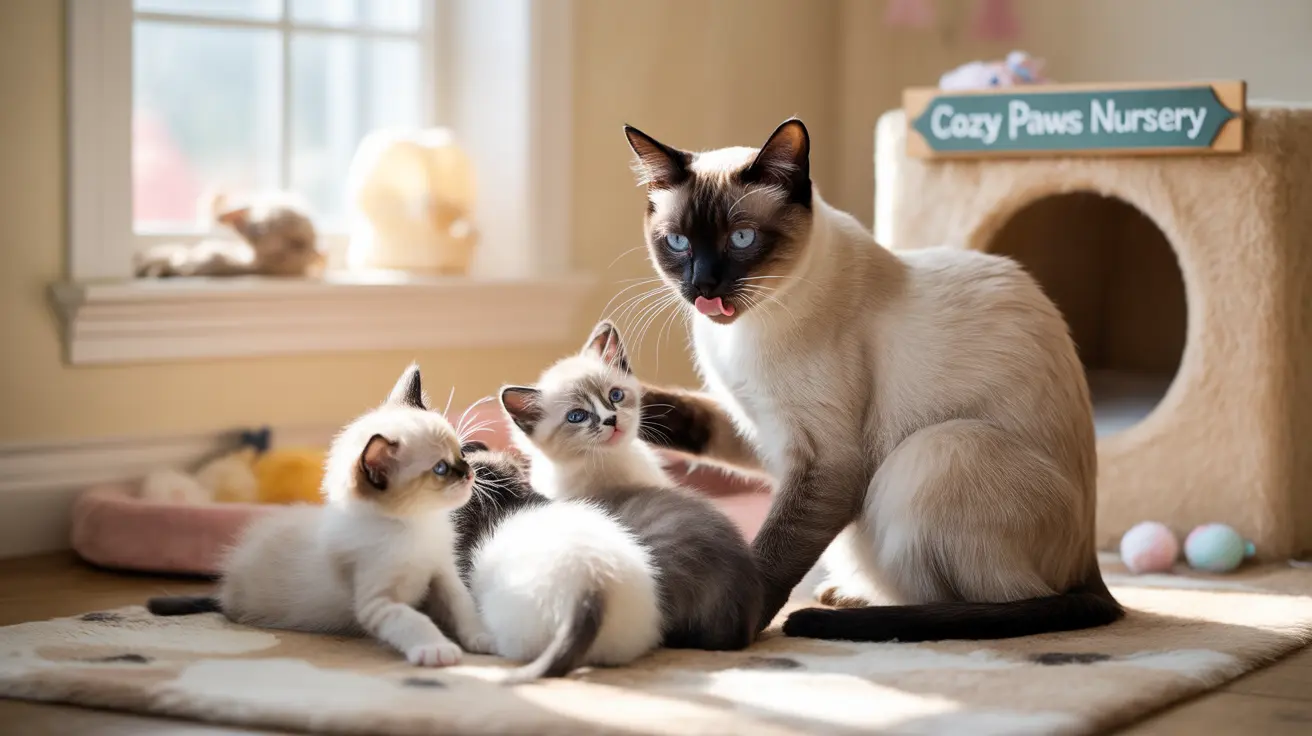Cats are remarkably prolific breeders, capable of producing multiple litters throughout their lives. Whether you're a cat owner, breeder, or simply curious about feline reproduction, understanding a cat's reproductive potential is crucial for responsible pet ownership and population management.
In this comprehensive guide, we'll explore the fascinating details of feline reproduction, including typical litter sizes, breeding frequency, and the various factors that influence a cat's lifetime kitten production.
Understanding Cat Pregnancy and Litter Sizes
Female cats, known as queens, typically produce litters of four to six kittens, though this number can vary significantly. First-time mothers usually have smaller litters of two to four kittens, while experienced mothers may deliver up to twelve kittens in exceptional cases.
Certain breeds are known for their larger litter sizes. Siamese, Maine Coon, and Oriental cats frequently produce bigger litters, while Persian cats tend to have fewer kittens per pregnancy. Mixed-breed cats show considerable variation in their litter sizes due to their diverse genetic makeup.
Factors Affecting a Cat's Reproductive Potential
Age and Health
A cat's age significantly impacts her reproductive capabilities. Cats reach sexual maturity between 6-12 months of age and typically remain fertile until around 7-10 years old. Peak breeding years occur between ages 2-6, when queens usually produce their largest litters.
The mother's health status plays a crucial role in determining litter size. Well-nourished, healthy cats tend to have larger litters, while those experiencing stress, poor nutrition, or health issues may have smaller litters or experience complications.
Breed and Genetics
Genetic factors heavily influence a cat's reproductive potential. Cats from bloodlines known for larger litters often continue this trait. Some breeds, particularly Asian breeds like Siamese and Burmese, are naturally predisposed to producing more kittens per litter.
Annual and Lifetime Reproductive Capacity
A healthy female cat can produce two to three litters annually during the breeding season, which typically runs from spring through autumn. With an average of 4-6 kittens per litter, this means a single cat could potentially produce 8-18 kittens per year.
Over their entire reproductive lifetime, cats can theoretically produce between 100-180 kittens under optimal conditions. However, this number represents the maximum potential rather than what typically occurs in real-world situations.
The Importance of Responsible Breeding
While cats can produce impressive numbers of offspring, unlimited breeding can lead to serious health issues for the mother and contribute to pet overpopulation. Professional breeders carefully manage their cats' reproductive schedules to maintain the health of their queens and ensure the quality of their kittens.
For pet owners, spaying is strongly recommended unless breeding is specifically planned. This prevents unwanted litters and provides numerous health benefits for the cat.
Frequently Asked Questions
How many kittens can a cat have in one litter and does litter size vary by breed?
Cats typically have 4-6 kittens per litter, though this can range from 1-12. Breed differences are significant: Siamese and Maine Coon cats tend to have larger litters, while Persians usually have smaller ones.
How many litters and kittens can a healthy female cat have in a year and over her lifetime?
A healthy cat can have 2-3 litters per year, producing 8-18 kittens annually. Over her lifetime (7-10 reproductive years), a cat could potentially produce 100-180 kittens, though this is rare in practice.
What factors influence the number of kittens a cat can have throughout her reproductive life?
Key factors include genetics, breed, age, health status, nutrition, environmental conditions, and the number of previous pregnancies. Peak breeding occurs between ages 2-6.
Why is spaying important to control a cat's lifetime kitten production and prevent health risks?
Spaying prevents unwanted pregnancies, reduces the risk of certain cancers and infections, and helps control the pet population. It also prevents the physical strain of multiple pregnancies on the mother cat.
Is it true that one female cat and her offspring can produce hundreds of thousands of kittens?
Theoretically, yes. Through exponential growth, an unspayed female and her offspring could produce tens of thousands of cats over several years. However, natural factors like mortality rates and environmental conditions prevent this in reality.






